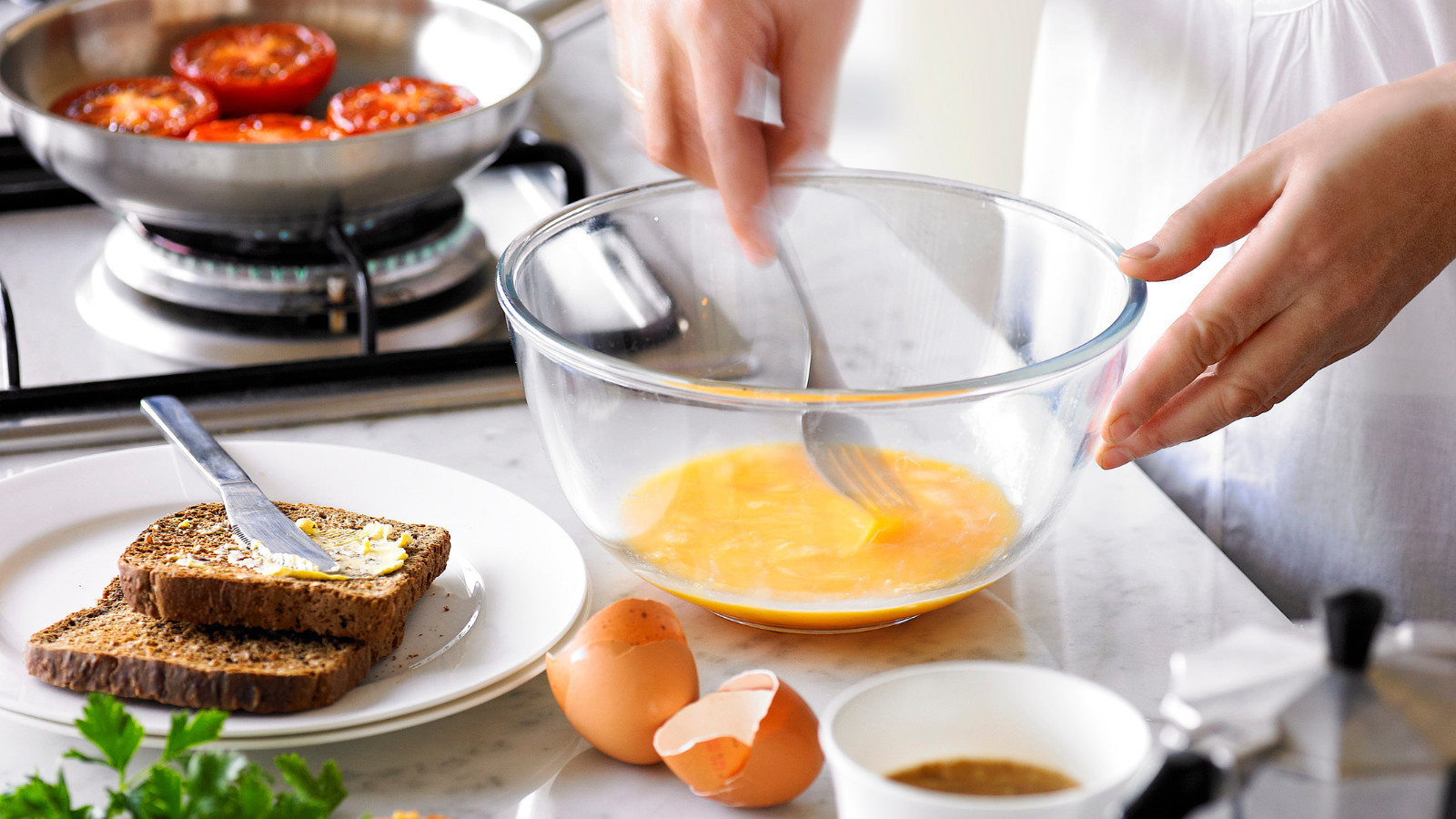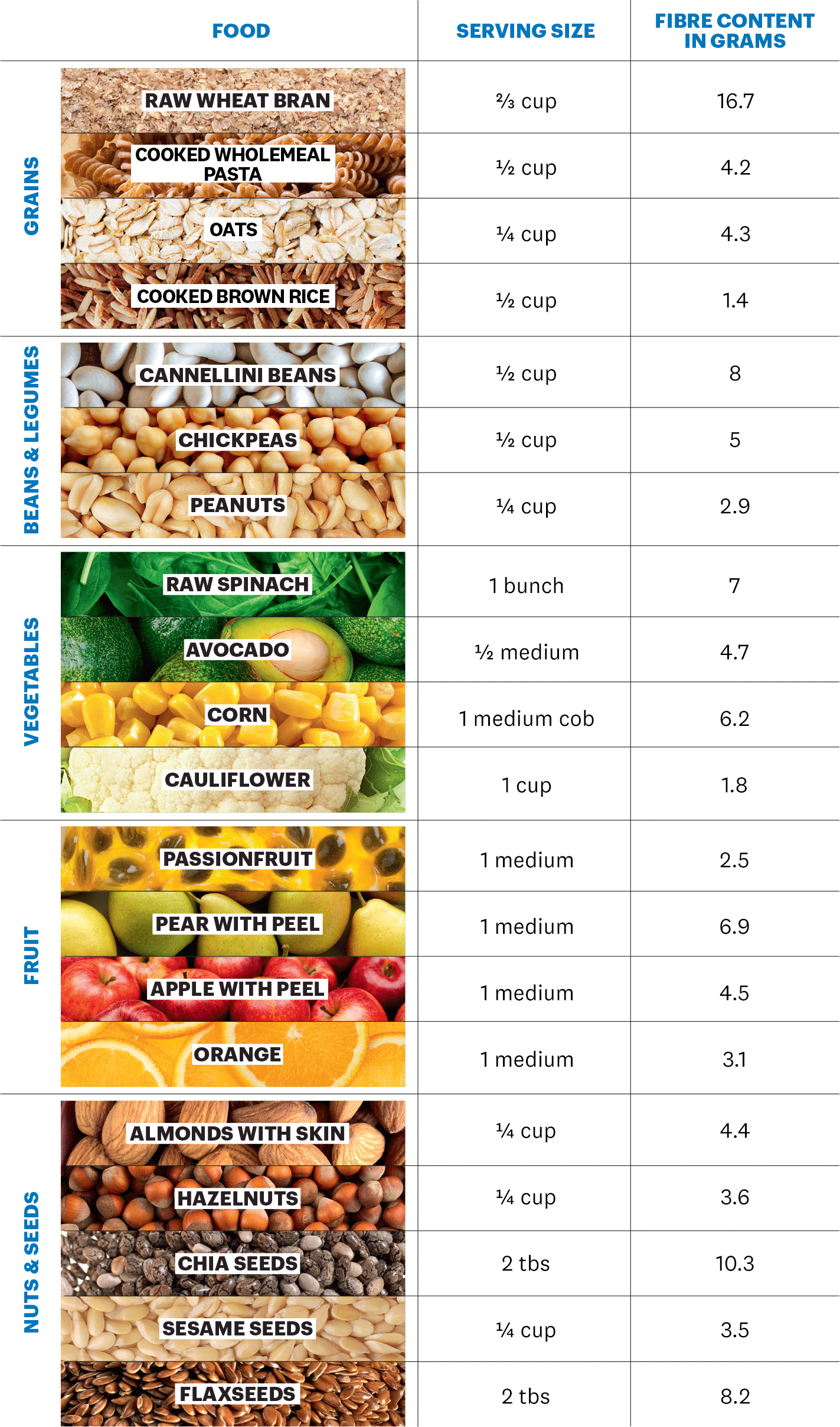What you need to know about fibre


Digestive health and fibre
Want to lose weight and reduce your risk of coronary heart disease? Fibre, the indigestible parts of plant foods that keep our digestive systems healthy, can make a big difference. “We used to think fibre helped with weight loss just because you feel fuller for longer and also because as fibrous foods take longer to chew, you eat more slowly and register that you’re getting full. But the hidden reason that fibre is so good for your health and for weight loss is because it changes your gut flora for the better,” says Dr. Helena Popovic. “Fibre is a prebiotic. It provides nutrients for the growth of healthy bacteria in your colon. And the healthier your bacteria, the more favourable enzymes they produce, so the better your biochemistry and digestive system will be.” In addition to the gut health benefits, a study published in the journal Nutrition Reviews showed that fibre supplementation significantly enhanced weight loss, while high intakes of dietary fibre reduce the risk of developing diabetes, coronary heart disease and stroke.
Are you getting enough fibre?
Women need 25g of fibre a day and men need 30g – but only about six out of 10 of us meet this target. This is mainly because less than a third of us eat enough fibre-rich grains or fruit and only four per cent eat the recommended serves of vegetables and legumes a day, according to the Australian Bureau of Statistics Australian Health Survey. One way to know you’re not getting enough fibre is by what comes out of you (or struggles to come out of you). “Essentially, fibre is really important for keeping our bowels regular.
The first symptom you’ll notice if you aren’t getting enough fibre is constipation. Another is if your stools are quite pellet-like. If it’s hard to pass and you’re straining, that’s a sign of constipation as well,” says Robbie Clark, an accredited practising dietitian and co-founder of The Health Clinic. “Other symptoms are cramping, pain or even bloating, which may indicate there’s a backlog. This backlog causes the pain as a lot of toxins are building up, leading to gas pressure,” Clark says. If you have a low-fibre diet, you can also worsen constipation predominant irritable bowel syndrome. “It might be constipation one week, then diarrhoea the next. These people need assistance in balancing their good gut flora and the fibre in their diet,” Clark says. Let’s see how we can turn our fibre numbers around.
Do’s and don’ts to increase your fibre intake
✓ Do have wholegrains first thing in the morning
“Breakfast is generally the time of day where we incorporate the majority of wholegrains into our diet, from bread or minimally processed cereals,” Clark says. If you don’t usually have wholegrains at breakfast, Clark suggests trying them every other day.
✓ Do sprinkle ground seeds and nuts on your meals
“Things like LSA, which is a linseed, sunflower seed and almond mix, or ground psyllium husk, are very versatile,” Clark says. “You can add them to yoghurt and mix with soups or casseroles – anything that’s a semi-liquid. It’s a fantastic way to increase the fibre and protein content of your meals. Making your own trail mix with nuts and seeds is a great snack, too.”
✓ Do bulk up your recipes with legumes
“Add lentils, chickpeas or beans to bolognese sauce, casseroles and soups. This will bulk up the food and increase the fibre content,” Clark says.
✓ Do drink more water
“As you increase fibre intake you need to increase water intake, too. Both soluble and insoluble fibre need water to help flush them through your system,” Dr Popovic says. Spread your water intake out across the day, rather than saving it all for mealtimes, as it can take more than 24 hours for fibre to make its way through your gut.
✘ Don’t eat too much highly processed food
“Highly processed foods will be depleted in fibre content,” Clark says.
✘ Don’t juice your fruit and veg
“Juicing inhibits the amount of fibre you’re consuming because you’re not getting the pectin, the fibre of the skin on vegetables and fruit,” Clark says. “Eat whole fruit and vegetables instead.”
✘ Don’t overload your body with fibre in one hit
“If you’re incorporating more fibre into your diet it’s important to do it gradually. A lot of people go from one extreme to another and that can cause gastrointestinal upset, a lot of gas and feelings of discomfort,” Clark warns. Dr Popovic advises: “Do it slowly by just changing your breakfast for a couple of weeks at first. Then, after a few weeks, start to add more leafy green vegetables into your diet. They’re easy to add because they don’t bulk up your food too much, meaning you’re less likely to feel bloated.”
“ If you add as many plant foods as you can to your diet, and as big a mixture as you can, you’ll get both soluble and insoluble fibre,” Dr Popovic says. Here, she breaks down the content of common fibre-rich foods.
20 fibre-rich foods

